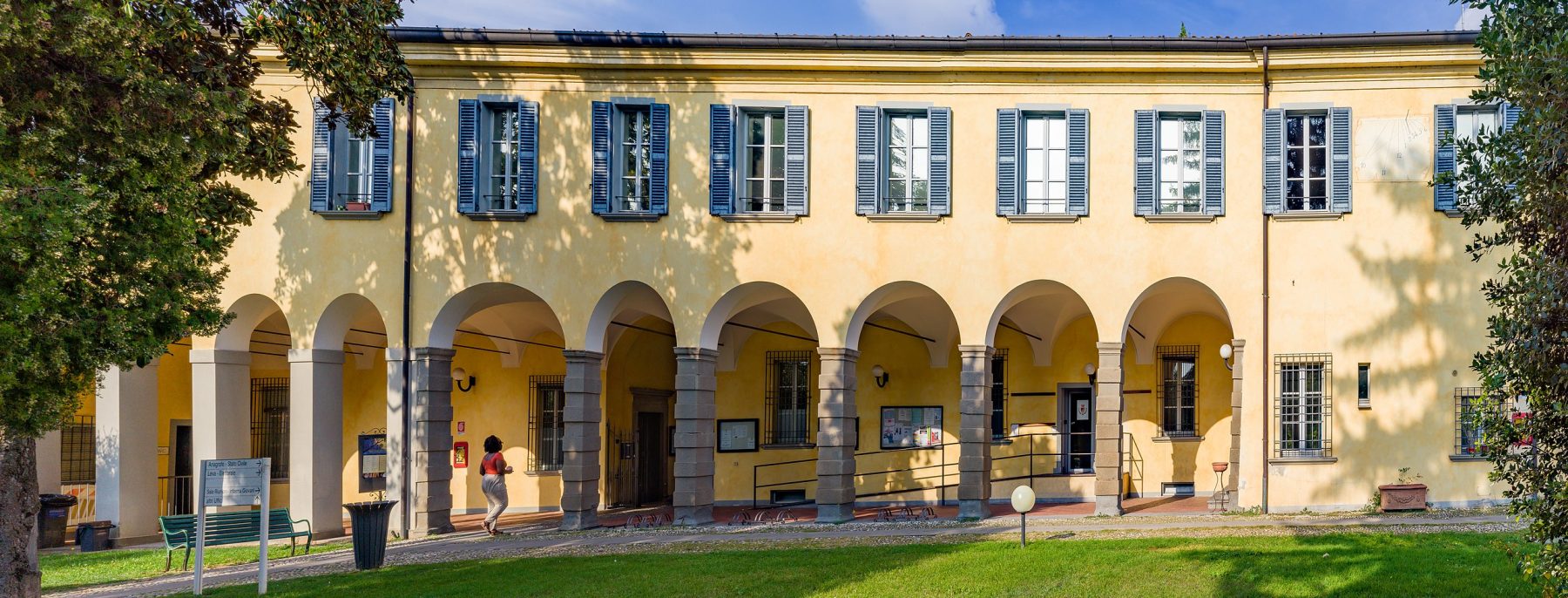








The historical center of Cologne
The centre of city life is Piazza Garibaldi, whose shape and architecture are derived from a public survey among the city’s estimated carried out between 1819 and 1820, after consulting Pietro Suardi, Giovanni Passoni, Andrea Parzan and don Viganò (owners of the lands); it was named after Giuseppe Garibaldi as decided by the town council in 1861. It is a large space on the slopes of Mount Orfano, which reminds the Agora of the Greek polis and on which the main historical buildings of the country overlook.
The parish church dedicated to the patrons SS. Gervasio and Protasio (with an imposing façade with four massive Corinthian columns surmounted by a tympanum) was built between the end of the eighteenth century and the beginning of the nineteenth century by Gaspare Turbini, on an area for centuries attached to the sacred buildings of the city. The interior (recently restored) is decorated with frescoes by Giuseppe Teosa and Gaetano Cresseri; the first altar on the right (dedicated to the Madonna protecting Cologne) presents the painting of Angelo Pietrasanta (a disciple of Francesco Hayez) and the altarpiece dedicated to the martyrdom of the patrons (painted in 1588 by Pietro da Marone), whereas the high altar with polychrome marbles and bronze inserts was made on a project by Rodolfo Vantini.
Next to the parish church there is the bell tower, whose construction began in 1500: it is testified by the stone with the inscription “Adì 14 Marzo 1514”; it was completed in the municipal era (in which it was also used as a prison) and in its current state in 1863. Only in the sixteenth century it was equipped with a clock to mark the working day, whereas the concert of bells was restored on 23rd May 1946.
The adjoining church of the Discipline or of St. Lorenzo had the facade covered with frescoes from the sixteenth century, depicting episodes of the life of St. Lorenzo. Inside the original central nave, a side was added, which perhaps served as a choir to Disciplini; the main altar of the seventeenth century is stucco and the altarpiece depicting the Virgin with Saints Lorenzo, Stefano and Carlo is also important.
On the opposite side of the square, there is the seventeenth-century Palazzo Suardi, now the seat of the Town Hall; it is accessed through a large portal in stone of Sarnico and surmounted by a balcony in sandstone. Through a large entrance hall, you enter the portico formed by 4 lights on pillars in stone of Sarnico and other 7 in masonry to overlapping nuts, on which 6 arches are set; you access the upper floor by a comfortable staircase that leads into the gallery (on which the rooms of the noble floor) and inside you can admire fragments of frescoes from the old town hall depicting a Crucifixion and portraits of SS. Gervasio and Protasio (dating back to the fifteenth century).
A few dozen meters from the square, Palazzo Passoni Gnecchi has been standing in its current L-shaped neoclassical style since 1810; under the portico, there is the most important room of the palace, frescoed by the great painter Giuseppe Teosa: the shores of Lake Sebino and mythological scenes of the countryside are depicted, whereas the ceiling depicts a young Apollo surrounded by a happy Olympus and who is about to climb on the sun’s chariot for the adventure of the new day. The park behind the villa (of poetic elegance landscape) reaches the slopes of Mount Orfano.
The complex of buildings called “Il Castello” (located in the middle of the homonymous street) identifies the Gnecchi palaces, passed through centuries in various properties; there is the castle itself with cellars, porch, well and courtyard dating from the twelfth century, to which was added the “Biolcheria” (with attached barn) in the fifteenth century. In the following years, the so-called “agency” or house of the factor of the Gnecchi counts was built, later expanded and modernized; on the first floor (in the main hall) a long frieze of torn frescoes decorates the walls. Between the sixteenth and seventeenth centuries, the palace of the Gnecchi family was built in the opposite grounds. In the passage from the court to the park of the villa, there are numerous sayings and proverbs, referring to the peasant and agricultural tradition of the city.
Photos and translations by Comune di Cologne.












